Tuesday
Dharma TeachingsSupplicating the Shambhala Lineage
An explication of the chant known as the Supplication to the Shambhala Lineage
by Russell Rodgers
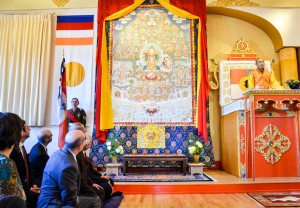 In this chant, Sakyong Mipham Rinpoche acknowledges the sources of the Shambhala Lineage. There were four main lineages in Tibet: the Gelugpa (the Dalai Lama’s lineage), the Sakya, the Kagyu and the Nyingma. Calling ours the “Shambhala Lineage” was, at the time it was written, a controversial statement because it seemed to add a fifth lineage, marking a separation from our Tibetan heritage.
In this chant, Sakyong Mipham Rinpoche acknowledges the sources of the Shambhala Lineage. There were four main lineages in Tibet: the Gelugpa (the Dalai Lama’s lineage), the Sakya, the Kagyu and the Nyingma. Calling ours the “Shambhala Lineage” was, at the time it was written, a controversial statement because it seemed to add a fifth lineage, marking a separation from our Tibetan heritage.
Some historical background is in order: Trungpa Rinpoche, our founder, was officially a Kagyu lineage holder, but his major teachers were Nyingma. When he came to the West, he found that Westerners seemed to miss the point when presented with practices that worked for Tibetans. So he began to adapt practices from his own tradition and from the Zen tradition in ways that would suit us. For instance, having beginners sitting as a group on cushions doing shamatha meditation is not a Tibetan tradition at all. It was borrowed from the Zen. Weekthuns and dathuns and seminaries for laymen did not exist in Tibet. Trungpa Rinpoche also added Shambhala teachings and practices, many of which also did not exist in Tibet.
Shambhala culture, however, was embedded in Tibetan society. Some of what we now call the Shambhala lineage originated with the pre-buddhist religion of Tibet, Bön. Trungpa Rinpoche greatly expanded these Shambhala elements into a path for Westerners– a path that would be complimentary to his previously introduced Buddhist teachings. He felt that Western culture needed some help before it could be a suitable container for Buddhism on a large scale. The Shambhala teachings were his answer to that problem. However, at the time of his death, we still nominally regarded ourselves as Kagyus, with a Tibetan, His Holiness Karmapa, at the head of our school.
To complicate things further, Sakyong Mipham Rinpoche, when he took over the reins from his father, studied mainly with Nyingma teachers. By that time, a Tibetan visiting one of our more than one hundred centres around the world probably wouldn’t recognize much of what we do, at least in its outer forms. However, if the visitor were perceptive, he or she would probably recognize that the inner heart of our teachings and practices synchronizes completely with the heart of the Tibetan tradition. So Sakyong Mipham Rinpoche took the step of naming a new lineage, the Shambhala Buddhist lineage, and wrote this chant, acknowledging our heritage and at the same time giving an outline of what would be emphasized in this particular school, Shambhala Buddhism.
Primordial Rigden,
All-good Samantabhadra,
Great Vajradhara;
The first three lines pay homage to three major sources of our lineage. All are similar in that they symbolize a source of inspiration in what Buddhists would call the dharmakaya level. Actually, there are two levels beyond this: the dharmadhatu and the vajradhatu. As one moves through these exceedingly spacious levels of mind, they become progressively more empty, and even the duality of observer and observed disappears. At this level, emptiness has not yet expressed itself as subject and object. There is only emptiness and luminosity.
One could say that these levels are levels of pure awareness, without the usual objects of such awareness. However, especially at the dharmakaya level, emptiness is pregnant with possibilities. These possibilities are at the pre-thought level, but they will have slightly different flavors as they develop out of the dharmakaya towards the level of symbolic thinking and finally to the manifestation of seemingly physical, seemingly outer, appearances in the mind.
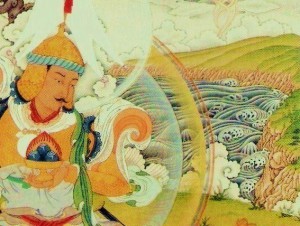
The cliffs of Cape Breton rise behind the Rigden King in this detail of a thangka by Gregory Smith. Photo courtesy of Gampo Abbey.
The “Primordial Rigden” is the symbolic source of the Shambhala Lineage. Rigden translates as “holder of the family”. In this case, the luminosity/emptiness represented by the Rigden will develop flavors of enlightenment embedded in life as lay people live it, interconnected with family and society at large.
Samantabhadra is connected with the Nyingma lineage. This lineage specializes in the variously named Great Perfection, ati or dzogchen teachings. Samantabhadra symbolizes complete primordial purity and utter wakefulness. Vajradhara occupies a similar position with the Kagyu. Here, it could be said, the flavor will develop more towards how to look, step by step, into all aspects of our minds and discover their true nature.
Lotus-born Padmakara,
Wisdom Yeshe Tsogyal,
Prahevajra, Shri Simha,
Holders of the Ancient Great Perfection:
These lines pay homage to the human founders of the Nyingma lineage. (See the commentaries on the Seven Line Supplication to Padmakara and the Supplication to Padmasambhava for information about Padmasambhava, also known as Padmakara). Prahevajra was the first human in Ancient Great Perfection tradition. Shri Simha followed shortly after that. It is difficult to find much historical information about them. It seems likely that Padmasambhava knew both and received teachings from them.
Yeshe Tsogyal was Padmasambhava’s consort. She became a powerful teacher in her own right. The two of them were largely responsible for establishing Buddhism in Tibet. Her influence is still felt because of the practices that she and Padmasambhava hid for future generations. Certain yogis, called tertons, still find examples of these teachings when the time is appropriate for them to be uncovered and put into practice.
Tilo, Naro, Marpa, Mila,
Siddhi-accomplishing masters of mahamudra:
Please approach and grant your blessings.
In contrast to the Nyingma lineage of the Ancient Great Perfection, there are many stories and histories about the early Kagyu mahamudra lineage holders. Tilo, short for Tilopa, is said to have gotten the teachings directly from Vajradhara. While it is difficult to know what this actually means, it does seem that he tuned into the space-like potential of the dharmakaya, as symbolized by Vajradhara, and started a new line of transmission. The four lineage holders mentioned here started the Kagyu lineage. They could not have had more different personalities, but their relationships went far beyond the constraints of personal character. Tilopa started as a cowherd, worked for many years as a servant for a courtesan during the night and pounded sesame seeds to extract their oil during the day. His student Naropa was a university professor. Naropa’s student Marpa was an irascible Tibetan farmer, and Milarepa, who received the lineage from Marpa, was an earnest but guilt-ridden murderer. Each was able to receive the inspiration of the mahamudra lineage and then pass it on to establish the Kagyu lineage.
Dawa Sangpo, the other dharmarajas, and the twenty-five Rigdens,
Who guide beings to the sacred land of Shambhala,
You are the sun and moon, the wish-fulfilling jewel.
Your brilliant mind is the ornament of the world.
Protect my vajra awareness.
Grant your blessings so that I may realize great bliss-wisdom.
With these lines we introduce the first lineage holders of the Shambhala tradition. Dawa Sangpo, a king, requested the Buddha for teachings that would not require him to become a monk. Buddha sent his monks and nuns out of the room, and gave Dawa Sangpo teachings that could be practiced by lay people in the context of their societal obligations. It is said that the whole kingdom of Shambhala became a place where it was easy to practice and society was vastly uplifted. The twenty-five Rigdens are the kings who followed Dawa Sangpo.
Gesar Norbu Dradul, you are the great activity lion.
All-victorious Sakyong, you reveal the treasure of basic goodness
And radiate the Great Eastern Sun.
Gesar was a king in ancient Tibet. He is the quintessential warrior of Shambhala, fearless in the face of psychological and physical obstacles. One sees depictions of him on prayer flags, riding his magnificent horse, magnetizing energy to overcome the degradation of human society. A Sakyong, or “Earth Protector” is an enlightened ruler who protects the sacredness of existence. The Great Eastern Sun represents the inherently awake quality of mind. It is from the east because, at dawn, there is a sense of freshness and eternal new beginning.
Ashe, the essence of life, fearlessly reveals confidence and compassion;
May all discover the power of this magic.
The drala lineage of Mukpo, you bring about the new golden age. Grant your blessings so that I may liberate all beings.
The ashe stroke is part of the calligraphy of the syllable “A”, the first syllable of the Tibetan alphabet. It communicates the awake quality of Great Eastern Sun. It is likened to a sharp razor, cutting through the aggression of any attempt to solidify reality. It is also a symbol of wakefulness, bravery, and gentle openness in the human heart.
The drala lineage of Mukpo refers to the Mukpo clan. In Eastern Tibet, clan membership didn’t necessarily refer bloodlines. One can become part of a clan by adopting that clan’s customs and spiritual practices. So our sangha has been adopted into the Mukpo clan, Trungpa Rinpoche’s ancestral family lineage. It is called a drala lineage because it has power and presence that overcomes confusion and degradation.
Buddhas, bodhisattvas, warriors, masters of the three times,
You guide us along the path to liberation.
You awaken bodhichitta.
You teach us the great view of emptiness.
You reveal the joy of luminosity.
Transmitting awareness-wisdom,
You lead us to perfect enlightenment.
Grant your blessings so that I may realize my nature
As the profound brilliant Rigden.
In these lines, we make the aspiration that we accomplish the completely awake, spacious state of the Rigden. The Sakyong, in writing this supplication, could have aspired that we realize our natures as Vajradhara or Samantabhadra, but he chose the Rigden instead. Perhaps this reflects the fact that unlike our predecessors, we are not, by and large, cave yogis or monks and nuns. We are a special category, householder yogis. This category of practitioners also existed in Tibet–Marpa being an example. However, Western society doesn’t provide much support for recluse yogis or monks and nuns. The path of the householder-yogi is by far the most prevalent here, and the most appropriate for most people.
Some masters say that, although the path of the householder is more difficult, it is the most profound. It does not shy away from all the energies of family relationships and society at large. They become part of our path. When we have transformed these energies, the possibility arises that we can enlighten the society around us. This is the goal of the Shambhala Buddhist Lineage.
Este artículo en español se encuentra aquí: http://shambhalatimes.org/2016/10/24/suplica-al-linaje-shambhala/
 Russell Rodgers has been wondering about this kind of topic for the 39 years that he has been practicing. He resides in the Kootenay mountains of British Columbia, in the town of Nelson, and has graciously agreed to allow publication of his beautiful essays on the Shambhala chants here in the Times.
Russell Rodgers has been wondering about this kind of topic for the 39 years that he has been practicing. He resides in the Kootenay mountains of British Columbia, in the town of Nelson, and has graciously agreed to allow publication of his beautiful essays on the Shambhala chants here in the Times.

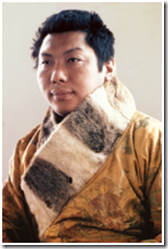
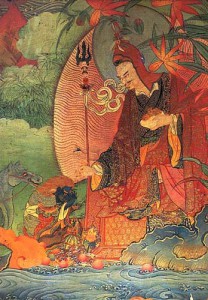
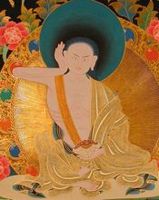
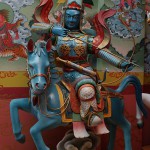




Aug 28, 2016
Reply
“He felt that Western culture needed some help before it could be a suitable container for Buddhism on a large scale. The Shambhala teachings were his answer to that problem.” — I haven’t heard this before — the idea that Shambhala teachings are preparatory to Buddhism.
Aug 26, 2016
Reply
With respect to the Ashe being part of the syllable “A ཨ, I could be wrong about this, but I was once told that it was shorthand for the vertical stroke on the righthand side of the Tibetan letter. It’s been some time since I’ve studied Tibetan writing, so I bow to those who are more current and more thoroughly immersed.
With respect to Petra’s question about the complex meanings of the chants–I think that this has to unfold over time. The terms make one wonder about the meaning, and this becomes a long-term contemplation that integrates with what one studies, and also with one’s practice. It could be years before something “clicks”.
With respect to Petra’s question about whether there is room in the Shambhala Path for Kagyu practices, I’m not in a position to give advice on this to anyone else. Anything I say is personal opinion. However, I think it’s important to appreciate the traditions that underlay the two approaches.
Personally, I find the Shambhala vajrayana deceptively simple on the surface, but subtle underneath. This might have to do with its relationship to dzogchen. I remember hearing that H.H. Khyentse Rinpoche, when shown a copy of the Werma sadhana, said that it fit into the ati family of practices, a branch of dzogchen. For many years after it was introduced, a lot of us older students really didn’t appreciate it. We naively viewed the Werma sadhana as watered-down “vajrayana light”. Tulku Urgyen commented on the relationship of dzogchen to Kagyu mahamudra in “Vajra Heart”. I’ve quoted it below, and I often think of it when reminded of the subtlety of the Shambhala path.
***********
“……Were a beginner to proceed without the duality of a watcher and something watched, just resting freely, with no previous practice in this, his or her mind would be left without any support. Mahamudra definitely emphasizes mindfulness as the main part of meditation. In the first stage of the path of mahamudra, in one-pointedness, mindfulness is mixed with shamatha. Reaching [the stage of] simplicity, mindfulness is discarded. So in general you can say that the mahamudra system treats beginners very kindly. Depending on your karma, your interest will be in dzogchen or mahamudra.
When Tsewang Drakpa, Chokgyur Lingpa’s son, was asked to explain the general teachings of Dzogchen, he said “Don’t ask me for mind teaching. I am a person who made it to the roof of the house without using the stairs. Through my explanations you won’t understand anything. You won’t be helped at all. So don’t ask me for mind-teachings, ask some other teacher.” He was one of those who took the sudden approach and therefore said: “You can’t ask me for mind teaching. Somebody who explains should know the path, should tell you which step to take first, that you should go slowly up the staircase in such and such way. I have no practical knowledge at all. Were I to explain my view to you, you wouldn’t be helped.” Mahamudra, on the other hand, leads one to the effortless by means of deliberate mindfulness.”– From Vajra Heart, by Tulku Urgyen Rinpoche
*******
The mahamudra system here refers to what we know as Kagyu vajrayana. It has a more step-by-step quality. Personally, I’m grateful to that relatively step-by-step introduction. I don’t think we were ready for anything else back in the 70’s and 80’s. I think it’s especially important for teachers to know the abhidharma, the arguments for emptiness, the Kagyu mahamudra vipashyana questions and so on. Then you can have the confidence to give simple answers to students because you’ve laid your own groundwork thoroughly.
A Kagyu style approach might have one contemplating suffering, the four noble truths, egolessness, compassion, and emptiness. In the vajrayana phase, one would engage with the complex and colorful sadhana practices. In formless meditation one would use the detailed questions of mahamudra vipashyana.
Dzogchen is more wide-open and spacious. If you feel baffled by it, it could be that you are contacting its subtlety. The Sakyong has said that often the simplest sadhanas the most profound. Tulku Urgyen refers to the “sudden” approach—people who have a strong foundation of practice in previous lives are said to be able to grasp the essence immediately. For the rest of us, it somehow resonates, but it’s more of a prolonged contemplation. My suspicion is that Shambhala dharma is so simple and profound that it resonates with a broader spectrum of people than just those who would be interested in starting on a long yogic path beginning with suffering. The trick is getting people to stick with the contemplation. However, as someone not entirely suited for the “sudden” path, I find my Kagyu background incredibly useful for understanding Shambhala.
An example of the dzogchen approach is in the structure of Shambhala Training—You get “basic goodness” as a contemplation right at the start. Sometimes we repeat “basic goodness” so often that it begins to sound like a Shambhala cliché. One can only hope that, sooner or later, one stops and questions what it actually means. If one has faith in the teacher, one will trust that he wasn’t just throwing words around. I fully expect to spend the rest of my life trying to unpack the limitless depths of “basic goodness”. It’s not just a beginner statement.
So we have two different approaches to the path here. I don’t think that one excludes the other. They compliment each other. But practically speaking, if I were choosing where to make the considerable time commitments that are required for vajrayana, I would look at where the best supports are. Currently, the supports are heavily weighted towards Shambhala dzogchen. That is where one finds the most contact with the guru in our sangha.
We can also look at it with respect to what is needed by society at large at this time–which teachings and practices best fit the times? What does society need at this critical point, when we sense the strong possibility of societal darkness on the horizon? I know that this is a big part of the Sakyong’s motivation. One gets more contact with the guru if one is engaging in a common project with him.
Aug 20, 2016
Reply
Thank you for this clear and helpful explanation of the meaning of the Shambhala Lineage Chant.
What is your advice to dedicated older students and practitioners who relate strongly/inuitively with the pure simplicity of the Kagyu Vajradhara imagery and who find the Rigden and Gesar imagery confusing and hence distracting? I am devoted to both Chogyam Trungpa and Sakyong Mipham, and try to manifest their teachings of compassion and mindfulness in my everyday and social life which is by no means confined to a cave. But when it comes to chants and visualisation practices, I struggle with the complex messages embodied and inferred in the core Shambhala Vajrayana images to the point that I become confused and discouraged.
Is there still room in the Shambhala Lineage to be devoted to the Kagyu practices, while appreciating but not organically relating to the Rigdens, Gesar and other symbolism?
Aug 20, 2016
Reply
In his introduction to Dr. Guenther’s translation of The Jewel Ornament of Liberation, the Vidyadhara said “When I was asked to design the cover for The Jewel Ornament of Liberation, I chose the syllable AH because it is the sound representing all pervading speech as well as the seed syllable of sunyata.” Sakyong Mipham Rinpoche has often said that the Ashe is our seed syllable, the essence and potency of the Shambhala teachings. Like Monika Jantsch, I had not heard that the Ashe stroke was part of the syllable AH — I had noticed that it appears on the symbol for the Kalachakra, but that doesn’t mean that it isn’t also present in AH. I wonder if Russell could elaborate on that? Without revealing too many secrets?
Aug 19, 2016
Reply
Thank you Shastri Rodgers!
Aug 18, 2016
Reply
Thank you. Mr. Rodgers!
Mr. Walker Blaine also offers a Shambhala Online 3 Part Class on “The Supplication to the Shambhala Lineage”. Found it very helpful indeed.
Aug 18, 2016
Reply
This is so good to learn.
Please be aware there is also a four part wonderful course on the supplication on Shambhala Online, with Walker Blaine. Beautiful course.
Aug 17, 2016
Reply
Thank you for this explanation. I look forward reading more!
Aug 17, 2016
Reply
Thank you Russell Rodgers for this inspiring commentary on our Shambhala Lineage Chant. Especially helpful for me are the explanations about dharmakaya / dharmadhatu / vajradhatu.
But there is one point I cannot go along with: A is not the first, but the last letter of the Tibetan alphabet.So I think in our context it signifies completion. And the Ashé stroke as we practice it has nothing to do with the calligraphy of the Tibetan A ཨ , which looks completely different.
Best wishes from Monika